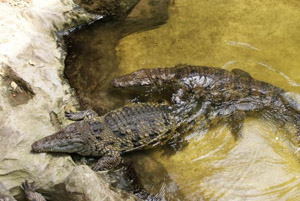MU, ASU Researchers’ Discovery Could Change Views of Human Evolution
*3.2 million-year-old human predecessor had arches in feet*
COLUMBIA, Mo. – Feet arches give humans a spring in their steps, shock absorbing abilities, and stiff platforms to propel themselves forward, allowing them to walk upright consistently. Now, researchers at the University of Missouri and Arizona State University have found proof that arches existed in a predecessor to the human species that lived more than 3 million years ago. This discovery could change scientists’ views of human evolution. The study is being published this week in Science.
Carol Ward, an MU researcher in the Department of Pathology and Anatomical Sciences at the MU School of Medicine, and William Kimbel and Donald Johanson, director and founding director of the Institute of Human Origins at Arizona State University, studied a 3.2 million-year-old fourth metatarsal of Australopithecus afarensis. A team from the Institute of Human Origins and National Museum of Ethiopia led by Kimbel discovered the fossil in Hadar, Ethiopia. The species is often referred to as “Lucy,” the nickname of the most complete fossil skeleton of the species to be discovered. (more…)

